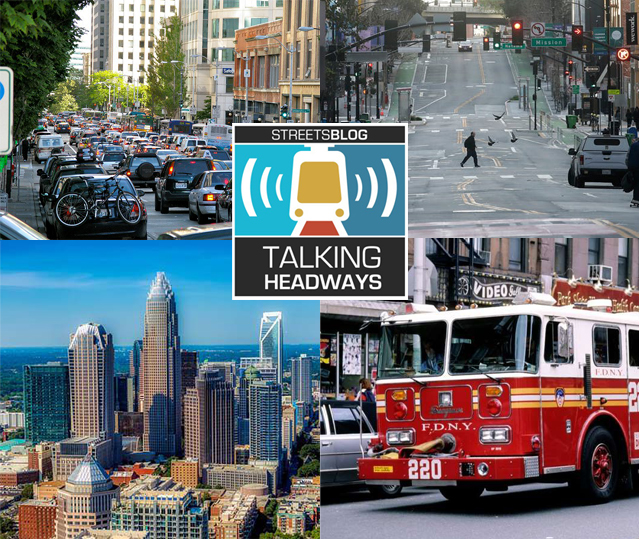This week we're joined by Danny Pleasant, the former transportation director and assistant city manager for the City of Charlotte. Pleasant joins us to talk about the connection between city services and street networks as well as a transportation expansion in the city.
And for those who like to read rather than listen, an edited transcript is below the audio player:
Jeff Wood: Well, that was something that really stuck out to me when you were working on street design guides and, and also the network connectivity because of what you were working on with CNU and what was eventually the emergency response work. And I just thought that was fascinating. I imagine it was part of your job specifically, but how did you get into the idea of street network design and emergency response has a topic?
Danny Pleasant: Well, you know, the City of Charlotte tends to have a highly collaborative culture, particularly around planning and design for the future. And as we were getting into urban street design guidelines, part of the guidelines, frankly, worked to create narrower streets, smaller streets. So at the time, the fire chief raised some concerns and objections to that because he was of the mindset, like many are, that he needs lots of room to stage his trucks and to put the outriggers out, let two huge fire trucks pass each other on the same street, particularly if there's someone park on the street, you know — just all this additive, additive, additive stuff.
And we had some conversations. We came to an understanding that we're both in the same line of work, we're there for public safety and public service. And I even suggested that I'm interested in lightening his workload by creating a safer street, so he doesn't have as much response to car crashes because, you know, fire departments predominantly respond to car crashes and medical emergencies, way more than they do fires. Fires are like 10 percent of their work, not a lot. And so he became very much on board that having more ways to access an emergency site the better. And so I think we finally came to an understanding having a robust network of streets was going to serve his interests way better than how the large congested streets that are a whole lot more difficult to navigate to get to these emergencies. So it just took some real genuine conversations and understanding that our objectives are the same or trying to create a safer community.
And then we started crunching the data and we just started doing the analysis — because he's also a business manager and has to be concerned about the effectiveness of his dollars and making sure as far as they need to go because we're all using taxpayer dollars. And what our analysis found out is that fire stations located in a robust network of connected streets are far more effective and you cover so many more square miles of households with your station than you did placing a station in areas area that has poor connectivity. It is pretty astounding, really. Two extreme cases: One fire station covered something like 28,000 residences. And another one covered 2,000 residences because it was in a poorly connected street system. And the thing is one fire station cost is about as much to operate as another fire station. They're more similar than they are different, the costs per station to operate. And so the cost effectiveness of the station is a highly developed a street network was far more favorable than the cost effectiveness of placing fire stations in areas without street connectivities. And from a taxpayer perspective, that seems to be just a huge deal.
JW: As I was doing my research, I saw that you once said that streets make up 30 percent of the land in Charlotte. And I imagine it's similar in many cities. Do you think that's something people realized about how much land transportation departments have control over?
DP: You know, it was funny. I think people almost see streets as sort of this void space, sort of a negative space, like it doesn't really do anything except maybe what a sewer line would do or electric line might do. And so I think people somehow inherently don't think of the streets as a public space. But we work pretty hard to really present it as public space. I used to tell my real estate development, friends and colleagues that I'm actually a bigger real estate manager and then you are. They raise their eyebrows and we say we control so much acreage. And my pitch was, "Don't you think we should manage that as the public space that can do the most good for the most people in the most helpful and healthy way possible?" So, yeah, I do see it as a real estate asset. That is a big part of the land-use mix within communities.







